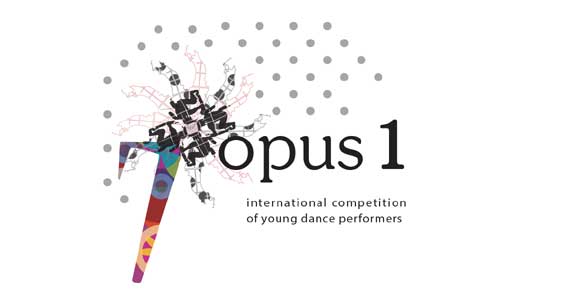|

OPUS 1 – PLESNA MINIATURA 2015
7. MEDNARODNO TEKMOVANJE MLADIH PLESNIH USTVARJALCEV
Slovensko ljudsko gledališče Celje, 13. junij 2015
The 7th International Competition of Young Dance Performers OPUS 1 – short dance piece 2015 Celje, Slovenia, 13th June 2015
Slovenian National Theatre Celje, 13th June 2015
THEME: IMAGE – BODY – MOVE / the exciting relationship between dance and visual arts
According to UNESCO, this year’s International Dance Day (29th April 2015) is to be dedicated to connections between dance and visual arts. In accordance with that, this year's theme for Opus 1 encourages those links.
Dance and visual arts have constantly been in a stimulating relationship. Their most common form of cooperation was between choreographers and visual artists, who create set designs for performances, (such as Pablo Picasso and Fernand Léger for Ballets Russes, Robert Rauschenberg for Merce Cunningham…). However, Cunningham rejected the idea that set design is an illustration of dance the same as music does not follow dance. This was in accordance with his desire to deconstruct the hierarchies which characterise his choreographies – no more hierarchy between the arts than there is between the dancers, the points of space or the parts of the body.
When Lucinda Childs wanted to work with visual artist Sol LeWitt, he asked her why she wants a scenery. “I don’t want a scenery, I want something which transforms the space and opens up new ways of seeing the dance,” she replied.
Numerous choreographers in the 60’s (Trisha Brown, Meredith Monk, Lucinda Childs …) began showing their works in galleries and museums.
Trisha Brown was looking for answers to ‘what is choreography’ in 1970, which led her to start a dialogue with contemporary visual arts practices. Enamored of the ideas of John Cage, she strove to invent methods of dance making that did not appear to be merely the result of subjective criteria of composing. In her work Man Walking Down the Side of a Building (1970) she approached site-specific practices, known in contemporary sculpture. Her work was searching for answers to essential choreographic problems: where to start, what to do and where to end. Objective architectural conditions and gravity caused a clear and unavoidable form of motion.
There is also an important—and more frequently overlooked—tradition of visual artists creating new choreographic forms in combination with their experiments in visual art, as did Oskar Schlemmer at the Bauhaus, or Francis Picabia with the Ballet suédois in Paris, both in the 1920s.
Rudolfh Laban also studied sculpture at first, before deciding on exploring the relationship between the human form, movement and space.
The recent years have seen a transformation of this relationship, especially with choreographers like Xavier Le Roy, Jérôme Bel and Martin Spångberg, which further spurred enlarging of the notion of choreography yet again.
This introduction intended to shed light only on some of the dialogues between visual and dance arts.
The extent of various relations between both forms is extremely wide and diverse and we are offering it to you for exploration and creation. We are also convinced that visual arts can trigger and expand choreographic imagination.
A short guideline for mentors and performers:
The obligatory part of the creative process should also be translating your ideas and procedures into words. The same as every year, you have to attach a description of your creative process to your application (literary origins, thoughts, procedures, decisions…). Think about it and work on it so as to genuinely delve into the depths of your short dance piece.
The theme is expected to offer a wide scope of possibilities to all artists, regardless of their age. Mentors should discuss it with young performers, while the latter should be autonomous and creative in shaping their ideas and pieces. Mentors should also spend more time with younger dancers in order to bring the theme closer to them on a level that they can understand.
The role of mentors in creating the short dance piece is to counsel, lead and guide the children/young performers in creating their own ideas, dance expressions and autonomous choreographies.
Approach the theme with exploratory zeal and creative inspiration.
|